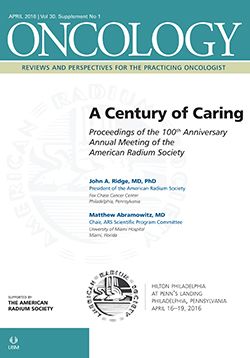(S006) Mission Improvement: Lessons From Initiating a Resident-Led Quality Improvement Project on Smoking Cessation at a County Hospital
Forming a successful quality improvement project is challenging at times but ultimately provides an excellent educational experience for residents and a rewarding opportunity to help patients.
Stephen J. Ramey, MD, Dayssy A. Diaz, MD, Marinellie Vega, BA, Awad A. Ahmed, MD, Shefali R. Gajjar, MD, Raphael L. Yechieli, MD, Cristiane Takita, MD, MBA; Department of Radiation Oncology, Jackson Memorial Hospital and University of Miami; Department of Radiation Oncology, Ohio State University
BACKGROUND: To ensure that patients receive the highest quality of care, the Accreditation Council for Graduate Medical Education and the American Board of Radiology have made quality improvement projects a required component of training. Quitting smoking has been shown to decrease toxicity and improve outcomes in patients undergoing cancer therapy. In an effort to decrease lack of access related to cost and to improve outcomes for patients undergoing radiation therapy, a protocol to provide free smoking cessation medications to an underserved population was implemented at a county hospital. This report describes the initial implementation of our prospective smoking cessation quality improvement study.
METHODS: This study prospectively enrolled a culturally diverse group of currently smoking patients at a safety net hospital and provided them with nicotine replacement or varenicline (if they had previously failed to respond to nicotine replacement) in an effort to help them quit smoking. The primary outcomes were self-reported smoking cessation at the end of the 12-week smoking cessation program and at the 3-month follow-up.
RESULTS: We have garnered a $10,000 grant, received institutional review board (IRB) approval, enrolled seven patients (both Spanish- and English-speaking), and completed the 12-week program with three patients. Bringing such a project to fruition can be rather daunting; however, engaging in this project has allowed residents to gain insight into applying for a grant, writing a protocol, going through the IRB approval process, obtaining consent from patients, training coinvestigators, keeping track of patient toxicities/outcomes, and finding ways to successfully enroll patients.
CONCLUSION: Forming a successful quality improvement project is challenging at times but ultimately provides an excellent educational experience for residents and a rewarding opportunity to help patients.
Proceedings of the 98th Annual Meeting of the American Radium Society - americanradiumsociety.org
